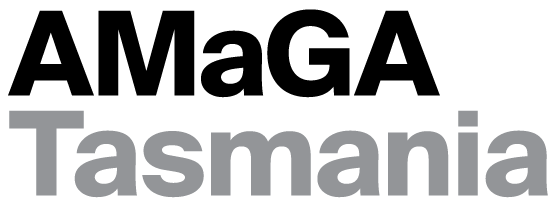 |
| Signage from the Tasmanian Wool Centre |
This article is #1 in a series we hope to bring you about the impact of COVID19 on museums and staff. A committee initiative starting with this piece by Elizabeth Bondfield a museum worker at two small Tasmanian museums-COMA Tasmania a medical museum in Jane Franklin Hall, a university college in South Hobart, and the Tasmanian Wool Centre is in Ross in the Midlands. Like all museums large or small across Australia each museum has closed in response to the pandemic.
'Like
every other museum worker (volunteer or paid) I have experienced some big
changes in the last few weeks, and I’ve been asked to reflect on those. You
might find you have some experiences in common. One thing I’ve learned in my
working life is that our museums offer us a collective wisdom or
‘brains-trust’. When we talk together and share our experiences, we can learn
from each other.
So back
in March, at COMA we were organising one of our seminars, a major fundraiser
for the year. ‘The Witches’ Cauldron’ was (or will be?) about the medical
history of South Hobart and the Hobart Rivulet. We had eminent historians presenting
talks on 19th century public health and miasma theory, a polio
epidemic and childbirth in the Female Factory. We had a great response from the
public – we’d worked hard to spread the word through flyers, our Friends,
through posters in local cafes and through professional networks. At the same
time, we were watching the news, and our healthcare professional volunteers and
attendees were starting to mutter that we might all be in lock-down by March
21, the date of the seminar.
 |
| CANCELLED! |
Sure
enough, on about March 10 we got the news from the college that the event
couldn’t go ahead. We had to protect our audience, our students, our volunteers
and staff. So began a painstaking task of contacting all our RSVPs – and we
were thankful for our RSVP list!- and letting them know it couldn’t go ahead.
Our scheduled guided tours were cancelled – another source of revenue. Some of
our audience kindly offered the fee as a donation to help us.
For
now, I am working with our volunteers to develop our new website for the future.
We are no longer allowed to work onsite at the college as it is in complete
lock-down to protect the student residents – so my plans to present digital
guided tours of our collection on a mobile phone are on hold for now. I am
focussing on preparing our database to go online. Thankfully our files and our
collection data are on a shared drive and we can access them from home. We need
to prepare a newsletter to talk with our Friends and our public, explaining the
closure. We wonder if we might be able to present our seminar in September, but
are also wondering about presenting it as a webinar.
At the
Wool Centre the trajectory was similar: we went from planning a calendar of
public programs, preparing to launch a membership program, and researching
topics for our exhibition development to having to put it all on hold. Again I
felt we had something ready to fly that got shot in the wing. Again, we saw a
creeping trajectory – first the programs had to be postponed ‘for the
foreseeable future’, then the Museum and finally the Wool Centre entirely were
closed. At the Wool Centre there are some 10 part time staff, and our managers
are applying for assistance to support them all.
It is
rare to see your worst case scenario actually happen, but this time every time
I thought ‘No, this surely can’t get any worse’ it has. I am grateful though
that the actual worst – our volunteers, staff, students, visitors or the Ross
local community getting sick with the virus – hasn’t happened.
At
both museums we are licking our wounds at present and trying to work out how to
plan past the closure and out the other side. We are wondering what that ‘other
side’ might look like.
3
months? 6 months? 12 months? 18 months? How long will our museums be closed?
How do we even begin to plan when we don’t even know those simple things? Are
there ways we can help our audiences access our collections and our stories
during the closure?
How
can we prepare for our museums re-opening to our volunteers, our staff, and our
visitors?
As you
can imagine I was feeling pretty down the other day, when a colleague of mine
encouraged me to imagine the future a bit more positively. It seems unlikely
that we’ll be closed ‘forever’, even if we don’t know yet when we will be able
to open. At best, a vaccine is about 18 months away, but if the virus is
contained within Tasmania it is possible to imagine freedom of movement within
our borders again. Then I started to imagine a lot of bored, lonely Tasmanians
– eager to get moving, to see people’s faces for real rather than on Zoom, to
see real things and make things or learn something new not on the internet but
in what my geek friends call ‘the big blue room’: the ‘real world’. I can
imagine an important role for our museums in that future. As one of my bosses
Deb said the other day: ‘This too shall pass.’
How
has your museum responded to the pandemic closure? How are you planning for the
future?'
We would welcome any stories from your museum-a word document and a bonus jpg or two sent to museumstasmania@gmail.com and we can publish!

No comments:
Post a Comment